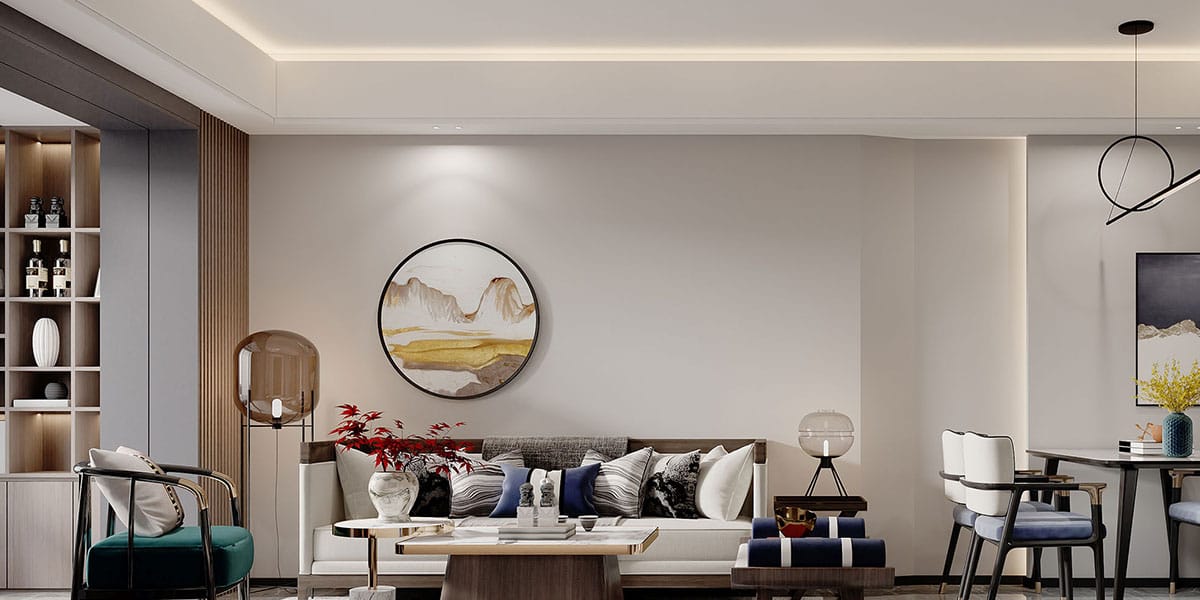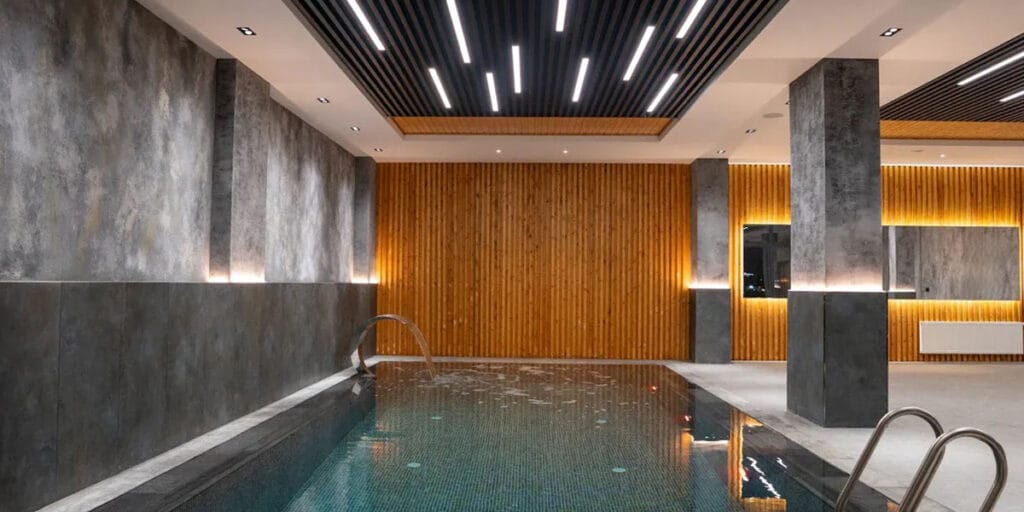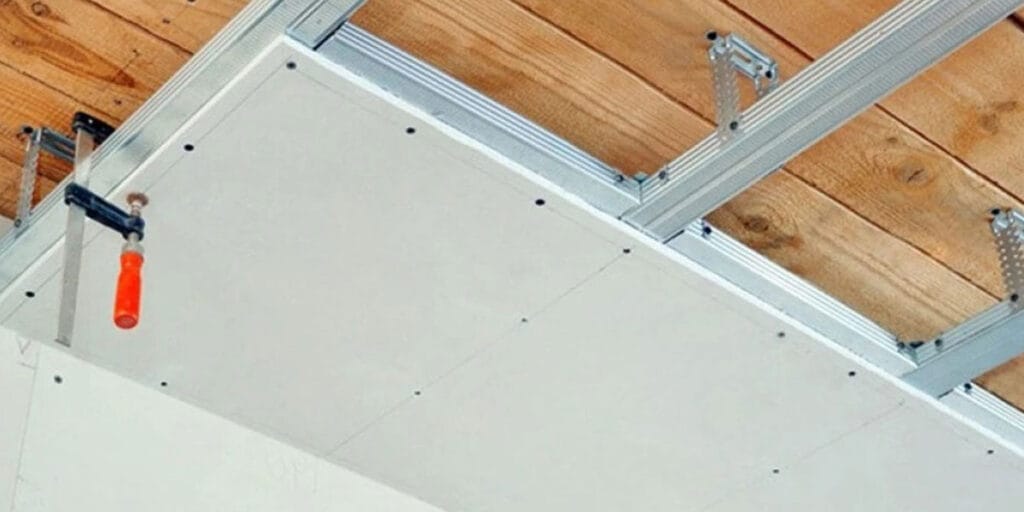
25 Apr MgO Board vs Gypsum Board for Mold Resistance and Durability
Table of Contents
When selecting building materials, it’s crucial to consider mold resistance and durability, especially for damp environments. Both MgO board and gypsum board mold resistant options are available, but MgO boards outperform gypsum boards in these conditions. MgO boards absorb only 0.34% moisture, while gypsum boards absorb nearly 3%, making MgO boards far more effective at resisting mold and water damage. Gypsum boards are more prone to swelling and bending, whereas MgO boards maintain their strength in wet areas like bathrooms and kitchens. For superior mold resistance and long-lasting performance, MgO boards are the ideal choice.
Key Takeaways
MgO boards take in only 0.34% moisture, so they resist mold and water damage well.
In places like kitchens and bathrooms, MgO boards are stronger and last longer than gypsum boards.
MgO boards cost more at first but save money later because they need fewer repairs.
MgO boards are good for the environment since they are made from natural materials and can be recycled.
Gypsum boards cost less and are easier to put up, but they don’t work well in wet areas because they soak up more moisture.
Overview of MgO Board and Gypsum Board
What Is an MgO Board?
Magnesium oxide boards, or MgO boards, are strong building materials. They are made from magnesium oxide, magnesium chloride, and other items like perlite or fiberglass mesh. This mix makes them very fireproof, water-resistant, and sturdy. MgO boards are used in places like bathrooms, kitchens, and outside walls. They are light but tough, so they are easy to use and last long. Plus, they are eco-friendly because they can be recycled and are made from safe materials.
What Is a Gypsum Board?
Gypsum boards, also called drywall, are common in indoor construction. They have a core made of calcium sulfate dihydrate, which is about 78% of the board, covered by paper or fiberglass. This design gives some fire and water resistance, but not as much as MgO boards. Gypsum boards are used for walls and ceilings in homes and offices. Additives like fungicides can improve their performance for certain uses. They are cheap and simple to install but are weaker and get damaged easily in wet or tough areas.
Key Differences in Composition and Properties
Knowing the differences between MgO boards and gypsum boards helps you pick the right one. The table below shows their main features:
Feature | MgO Board | Gypsum Board |
|---|---|---|
Composition | Magnesium oxide, magnesium chloride, perlite, wood fibers, fiberglass mesh. | Calcium sulfate dihydrate core with paper or fiberglass facing. |
Fire Resistance | Excellent; rated A1 (non-combustible). | Moderate; lower than MgO boards. |
Moisture Resistance | Highly resistant, ideal for damp environments. | Limited; deteriorates with prolonged exposure to moisture. |
Strength and Durability | Stronger, more impact-resistant. | Less durable, prone to damage. |
Environmental Impact | Eco-friendly, recyclable, and non-toxic. | Natural material but energy-intensive production. |
Cost | Higher due to superior properties. | Lower, making it budget-friendly. |
Applications | Suitable for high-demand areas like kitchens, bathrooms, and exteriors. | Commonly used for interior walls and ceilings. |
MgO boards are better for fire and water resistance, making them great for tough areas. Gypsum boards cost less and work well for regular indoor spaces. Compare these features to decide what fits your needs best.
Mold Resistance

Why MgO Board Is Mold Resistant
MgO board is great at stopping mold from growing. It contains magnesium oxide, which blocks mold, mildew, and fungus. This board absorbs only 0.34% moisture, keeping it dry. Mold and mildew need moisture to grow, so they can’t survive. MgO board works well in damp places like bathrooms and basements. Its non-organic makeup means it doesn’t feed mildew or fungus. This makes it even better at resisting mold.
Mold Resistance in Gypsum Board
Gypsum board is common but less mold-resistant than MgO board. Its core, made of calcium sulfate, absorbs up to 3% moisture. This higher moisture level helps mildew and fungus grow. Some gypsum boards have fungicides, but they still struggle in wet areas. Over time, moisture weakens gypsum boards, causing swelling and damage. This makes them less ideal for humid spaces.
Comparing Mold Resistance
When comparing mold resistance, MgO board is much better. The table below shows their differences:
Material | Moisture Resistance | Mold Susceptibility |
|---|---|---|
MgO Board | Excellent (0.34% absorption) | Low |
Gypsum Board | Poor (3% absorption) | High |
MgO board and gypsum board handle mold very differently. MgO board stays dry and blocks mold, mildew, and fungus. Gypsum board absorbs more water, making it easier for mildew to grow. For damp areas, MgO board is the better choice.
Durability
Durability of MgO Board
Magnesium oxide board is very strong and long-lasting. Its thick design helps it handle hard hits without breaking. This makes it great for busy places like schools, hallways, or offices. MgO board does not rust, even in wet or salty areas. Tests show it rusts less than 20 mils yearly, proving it works well in damp spots.
It also meets strict fire safety rules. It passes ASTM E84 and E119 tests, showing it is safe for buildings. MgO board stays strong in all weather, saving money on fixes or replacements. Whether inside or outside, MgO board lasts a long time and stays reliable.
Durability of Gypsum Board
Gypsum board is fairly strong but not for tough places. It is lighter, so it is easy to carry, but it breaks more easily. Over time, it can crack or dent, especially in busy areas. If it gets wet for too long, it can swell, bend, or even fall apart.
Even special moisture-resistant gypsum boards are not as good as MgO boards. Gypsum boards soak up about 3% water, which weakens them and helps mold grow. This makes them less useful in wet places like bathrooms or basements. Gypsum board works fine for regular walls and ceilings but is not strong enough for harder jobs.
Comparing Durability
When looking at durability, MgO board is much better than gypsum board. The table below shows their differences:
Feature | MgO Board | Gypsum Board |
|---|---|---|
Durability | Very strong, thick, handles impacts well | Fairly strong, light, breaks easily |
Resistance to Cracking | Does not crack or chip easily | Can crack or dent over time |
Suitability | Best for busy or tough areas | Not good for hard conditions |
MgO board is better at handling cracks, water, and rust. It is the best choice for long-lasting use. Gypsum board is cheaper and simple to install but not as tough as MgO board. For strong and durable projects, MgO board is the smarter pick.
Fire Resistance
Fire Resistance of MgO Board
MgO boards are great for fire safety because they don’t burn. They stop flames from spreading, making them very safe. These boards meet strict fire tests like UL 263/ASTM E119 and BS476. They also pass smoke tests, letting out very little smoke during fires.
Their mix, which includes magnesium oxide, handles high heat without breaking. This makes them perfect for places needing fire safety, like kitchens or offices. Using MgO boards can make your building much safer from fires.
Fire Resistance of Gypsum Board
Gypsum boards resist fire but not as well as MgO boards. Their calcium sulfate core releases water vapor when heated, slowing fire spread. But this only works for a short time. Under strong heat, gypsum boards weaken and may fall apart.
They meet fire safety rules like UL 263/ASTM E119 and BS476 but are less strong. Gypsum boards can burn partly, so they’re not ideal for risky areas. They work fine for homes but aren’t the best for places needing high fire safety.
Comparing Fire Resistance
MgO boards are better than gypsum boards for fire resistance. The table below shows their differences:
Feature | MgO Board | Gypsum Board |
|---|---|---|
Combustibility | Does not burn | Can burn partly |
Fire Resistance Rating | Passes UL 263/ASTM E119, BS476 | Passes UL 263/ASTM E119, BS476 |
Smoke Leakage | Very low | Moderate |
Durability Under Heat | Stays strong | Weakens with heat |
MgO boards are the best for fire safety because they don’t burn and stay strong in heat. Gypsum boards resist fire but are weaker and less safe. For fire-risk areas, MgO boards are the better choice.
Moisture Resistance
How MgO Board Handles Moisture
MgO board is great at resisting moisture. It works well in wet places like kitchens and bathrooms. Its materials, like magnesium oxide, stop water from soaking in.
MgO boards stay strong in humid areas without water damage.
They are perfect for wet spaces like kitchens and bathrooms.
These boards don’t swell, bend, or break when wet. They keep their shape even in tough, damp conditions. If you need a material for wet areas, MgO boards are a smart choice.
Moisture Resistance in Gypsum Board
Gypsum boards don’t do well in wet places. Their calcium sulfate core soaks up water, causing them to swell and bend. Over time, they can break apart. Studies show how gypsum boards fail in wet conditions:
Study Title | Description |
|---|---|
Moisture Performance of High-R Wall Systems | Gypsum boards in 22 homes showed big moisture changes in winter. |
Characterization of Moisture Performance of Energy-Efficient Light-Frame Wood Wall Systems | Gypsum boards in test huts had moisture problems in Climate Zone 4A. |
Moisture Performance of Walls | Over three years, gypsum boards had the most moisture in the first winter. |
Even special moisture-resistant gypsum boards can’t match MgO boards. They work okay indoors but fail in very wet places.
Comparing Moisture Resistance
MgO boards are much better than gypsum boards for handling moisture:
Feature | MgO Boards | Gypsum Boards |
|---|---|---|
Moisture Resistance | Low, gets damaged in wet conditions | |
Mold Growth | Stops mold | Mold can grow |
Installation Areas | Kitchens, bathrooms | Needs special versions for wet areas |
MgO boards are the best for wet places. They resist water and mold better than gypsum boards. Gypsum boards need extra help to handle moisture but still don’t last as long. For wet spaces, MgO boards are the top choice.
Cost Comparison

Cost of MgO Board
MgO boards work better but cost more. Each sheet costs $15 to $25, depending on thickness and brand. This price includes features like fire and mold resistance and durability. Though expensive at first, they save money later by needing fewer repairs. MgO boards are best for projects needing strong and lasting materials.
Cost of Gypsum Board
Gypsum boards are cheaper and widely used. Each sheet costs $6 to $12, based on size and type. They are affordable for homes and offices. But in wet or busy areas, they may need more repairs. Over time, this can make them cost more overall.
Long-Term Cost Implications
MgO boards cost more upfront but save money over time. They last longer and resist water and mold, so repairs are rare. Gypsum boards, however, need more fixes, raising costs later.
Here’s an example of gypsum board costs:
Starting costs for a gypsum board project are about $11.69 million.
Civil work makes up 71.5% of this, and machines cost $1.85 million.
First-year running costs are $13.24 million.
By year five, costs rise by 26.2% due to inflation.
These numbers show how gypsum boards can get expensive over time, especially in tough conditions. Choosing MgO boards can save money by cutting repair and upkeep costs.
Environmental Impact
Sustainability of MgO Board
MgO boards are a green choice for building projects. They are made from magnesium oxide, a natural mineral. This means they are safe, non-toxic, and recyclable. Making MgO boards uses less water and energy, lowering CO₂ emissions. This makes them better for the environment than gypsum boards.
MgO boards also support eco-friendly programs like LEED certification. They last a long time, so you don’t need to replace them often. This saves resources and reduces waste over time. Picking MgO boards helps the planet while giving you a strong, reliable material.
Environmental Impact of Gypsum Board
Gypsum boards are common but harm the environment more. Their production needs a lot of energy and water. This process releases more CO₂, which adds to pollution.
Gypsum boards don’t last as long and are harder to recycle. They often end up in landfills, creating more waste. Because they wear out faster, you’ll need to replace them more often. While made from natural materials, their production is less eco-friendly than MgO boards.
Comparing Environmental Impact
MgO boards are much better for the environment than gypsum boards. They use safer materials and need less energy and water to make. They are recyclable and don’t harm the planet as much.
Gypsum boards, on the other hand, use more resources and create more waste. They also release more CO₂ during production. If you want an eco-friendly option, MgO boards are the clear winner.
Ease of Installation
Installing MgO Board
Installing MgO board is simple but needs careful work. You can cut it with tools like a utility knife or a saw with a carbide blade. These boards are light, so they are easy to move and place. Use screws or nails to attach them to surfaces.
MgO boards don’t need extra steps like sealing or priming before use. This saves time and effort. Make sure to align them properly and leave space for expansion. Always follow the manufacturer’s instructions for the best results.
Installing Gypsum Board
Gypsum board is quicker and easier to install. You can cut it by scoring with a knife and snapping it apart. Its light weight makes it simple to carry and position. Like MgO boards, you can secure it with screws or nails.
However, gypsum boards need extra steps like taping and adding joint compound for a smooth finish. These steps take more time. Gypsum boards are also fragile, so handle them carefully to avoid cracks or breaks during installation.
Comparing Installation Processes
Both MgO and gypsum boards are easy to install, but they differ. MgO boards need fewer finishing steps, saving time. They are also stronger, so they don’t break easily during installation. Gypsum boards are simpler to cut and attach but need extra finishing, which takes longer.
Feature | MgO Board | Gypsum Board |
|---|---|---|
Cutting Process | Uses basic tools | Scoring and snapping |
Finishing Steps | Few needed | Needs taping and joint compound |
Durability During Install | Strong, resists damage | Fragile, can break easily |
For faster and stronger installation, MgO boards are better. For simpler tasks, gypsum boards work fine.
Picking the right material depends on what your project needs. MgO boards are great at stopping mold, lasting long, resisting fire, and handling moisture. These features make them ideal for wet places or areas needing strong materials. Gypsum boards, however, cost less and are simpler to install. This makes them a good choice for regular home use.
Tests show how these materials differ:
Testing Standard | What It Tests |
|---|---|
Checks how much water panels soak up. | |
ASTM D3273 | Tests how well panels resist mold in humid air. |
For wet spaces, MgO boards are the best pick. For cheaper projects, gypsum boards are a smart option.
FAQ
Where should MgO boards be used?
MgO boards are best for wet or fire-risk areas. They work great in bathrooms, kitchens, and outside walls. Their strength and mold resistance make them perfect for tough spots.
Can MgO boards be painted?
Yes, you can paint MgO boards. First, apply a primer to help the paint stick well. This makes them a good choice for homes and businesses.
Are gypsum boards good for wet places?
Gypsum boards are not good for wet areas. They soak up water, which can cause swelling and mold. MgO boards are better for damp spaces.
How strong are MgO boards compared to gypsum boards?
MgO boards are much stronger than gypsum boards. They handle heavy use and tough conditions better. This makes them great for busy walls or outdoor use.
Are MgO boards good for the environment?
Yes, MgO boards are eco-friendly. They are made from natural materials and create less pollution during production. They also last longer, so there’s less waste from replacements.
